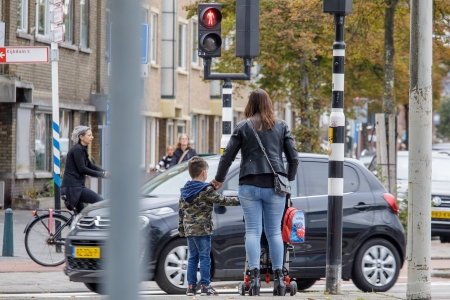Proper traffic education requires:
- Direct alignment with the target group's road user roles and how they experience those roles.
- A substantiated understanding of the target group’s road user roles, risk factors and situations.
- Subsequent very concrete (SMART) learning goals in terms of skills, behavioural strategies, knowledge and motives.
- Didactic work formats that fit the target group’s learning goals and cognitive abilities.
- Enthusiastic, motivated and well-informed teachers, supported by parents where necessary (during practical training).
See [3] [16] and the questions What are the characteristics of a good traffic education programme? en What are the goals of traffic education?.
The developed checklist 'quality of traffic education interventions' [16] is a practical tool for users to get an indication of the quality of a particular programme or course. It is also a tool for developers to check whether their product meets the main qualitative criteria. Assessment with this checklist shows the quality of the programmes to have increased in recent years: from a total of 3.6 in 2012 to 4.7 in 2022 at a maximum score of 5 [16]. Most educational programmes appear to meet the conditions formulated by Vissers and colleagues about knowledge of the problem behaviour, a clearly formulated target group, well formulated learning goals and teaching methods geared to the problem behaviour, target group and learning goals (see the question What are the characteristics of a good traffic education programme?). The greatest gains can still be made in the implementation of effect measurement [16].
Effect measurements should ideally be done in terms of crash involvement. But that is virtually impossible since crashes are fortunately rare events. To demonstrate an effect statistically, large numbers are needed and thus a very long time period in which all kinds of other things happen, besides traffic education, that may have affected crash involvement. Consequently, no statement can be made about the effect of traffic education.
Final assessment therefore preferably takes place in terms of observed road safety behaviour. After all, road safety behaviour is ultimately what traffic education aims to influence and, thus, observed behaviour is a much more reliable indication than self-reported behaviour. Interim assessments can also look at underlying aspects such as skills, knowledge and motives, based on the learning goals and as long as there is a correlation with the eventual desired/intended behaviour.
